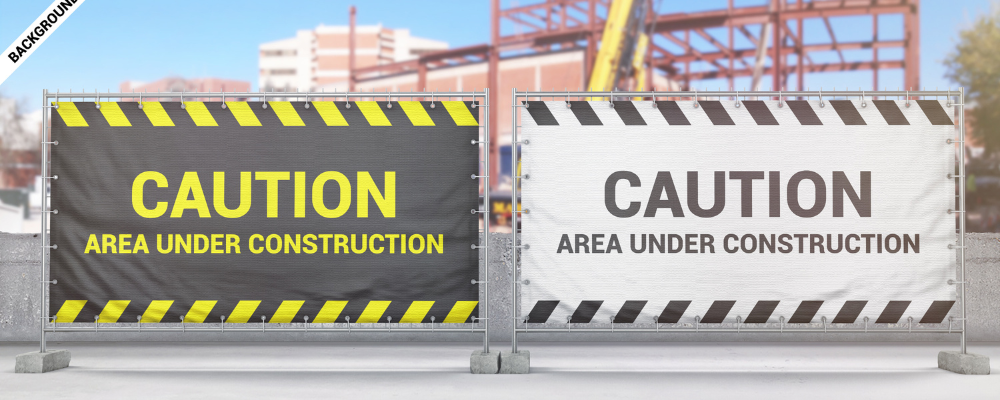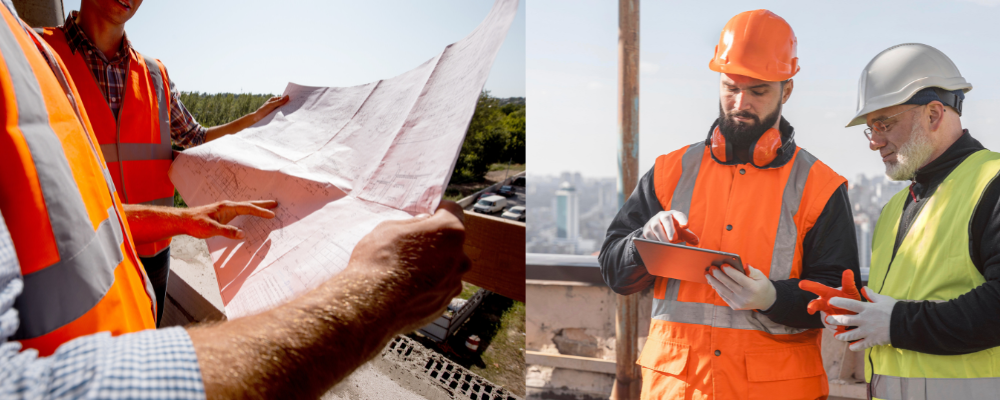
Introduction:
In the construction industry, safety is paramount. The safety of workers and the general public depends on strict adherence to health and safety protocols. One crucial element of ensuring workplace security in construction sites is using inspection tags. In this comprehensive guide, we will delve into the significance of inspection tags and how they play a pivotal role in safeguarding the well-being of construction workers.
Understanding Inspection Tags
What Are Inspection Tags?
Inspection tags are essential tools for maintaining safety standards in construction. These tags come in various forms and serve as a visual reminder of equipment status, maintenance requirements, and potential hazards.
Types of Inspection Tags
Inspection tags are diverse in their design and purpose, tailored to meet specific needs in the construction industry. Here, we will delve into the characteristics and functions of some key inspection tags, emphasizing their significance in ensuring workplace security for construction workers.
-
Brady® Lockout Tags
Design and Features:
- Brady® Lockout Tags are constructed from durable materials, typically reinforced polyester or polypropylene.
- They come in various colors for different purposes, making them easily distinguishable.
- These tags are often equipped with pre-printed warning messages and spaces for custom information.
Function:
- Brady® Lockout Tags are primarily used to indicate that a piece of equipment is temporarily out of service for maintenance, repair, or safety-related issues.
- They prevent unauthorized access to equipment by providing clear visual warnings.
- Lockout tags can be securely attached to power switches, valves, and other control points, ensuring that workers understand the status of the equipment and the necessity of avoiding operation during maintenance.
-
Brady® Standard Scaffold Status Tags
Design and Features:
- These tags are designed to withstand the rigors of construction environments.
- Brady® Standard Scaffold Status Tags are often made from durable, weather-resistant materials such as vinyl or polyester.
- They have specific fields for recording scaffold inspection details, including inspection dates, responsible personnel, and inspection results.
Function:
- Scaffold status tags are crucial for the safety of construction workers who rely on scaffolding.
- They provide a transparent and standardized way to communicate the current status of scaffolds, whether they are safe for use, need repair, or are off-limits.
- Prominently displaying inspection information, these tags prevent accidents related to faulty or unsafe scaffolding.
-
Honeywell Styrene Lockout “Do Not Open Tags”
Design and Features:
- These lockout tags are usually crafted from styrene, a durable and weather-resistant material.
- They often feature bold, eye-catching colors and standardized warning symbols to convey their messages effectively.
- Honeywell Styrene Lockout “Do Not Open Tags” come with reinforced grommets, allowing them to be securely fastened to equipment.
Function:
- These tags prevent unauthorized access to machinery, equipment, or systems.
- They serve as a visual deterrent, cautioning workers against attempting to open, operate, or tamper with locked-out equipment, which might pose serious safety risks.
- The bold “Do Not Open” message is clear and universally understood, promoting workplace security.
-
Metal 4-Year Inspection Tag
Design and Features:
- Metal 4-Year Inspection Tags are typically constructed from sturdy materials like aluminum or stainless steel.
- They often feature pre-punched holes for easy attachment to equipment.
- These tags may have a designated space for recording inspection details, including dates and comments.
Function:
- Metal inspection tags are known for their durability, making them ideal for harsh construction environments.
- They are typically used to indicate when an inspection has occurred, record the inspection date, and specify when the next inspection is due.
- These tags help ensure that construction equipment is regularly assessed for safety, essential for preventing accidents and maintaining compliance with safety regulations.
-
Plastic 4-Year Inspection Tag
Design and Features:
- Plastic 4-Year Inspection Tags are made from robust, weather-resistant plastics, which are both cost-effective and durable.
- They often feature areas for recording inspection information and can be customized with essential details.
- These tags may come in various colors and shapes, allowing for versatility in their application.
Function:
- Plastic inspection tags serve a similar purpose to their metal counterparts, indicating when equipment has been inspected and when the next inspection is due.
- They are ideal for environments where metal tags might not be suitable, such as when weight is a concern or when a cost-effective solution is preferred.
- These tags facilitate consistent inspection scheduling, contributing to workplace safety and compliance.
These inspection tags are vital in ensuring workplace security for construction workers. Their diverse designs and functions cater to the specific needs of construction sites, allowing for efficient communication of safety-related information and enhancing overall safety and security in the construction industry.
The Role of Inspection Tags in Workplace Security
-
Enhanced Equipment Safety
Construction sites are rife with heavy machinery and equipment. Inspection tags communicate crucial information about the status and safety of equipment, preventing accidents due to faulty machinery.
-
Compliance with Regulations
The construction industry is subject to a myriad of safety regulations. Inspection tags help ensure all equipment and machinery meet the required standards, preventing legal issues and fines.
-
Efficient Maintenance Scheduling
By clearly marking inspection dates and maintenance requirements, these tags help streamline maintenance processes, reducing downtime and ensuring continuous operations.
Benefits of Inspection Tags
Improved Communication
In the dynamic and often noisy construction world, effective communication is essential to maintain a safe and organized work environment. Inspection tags play a vital role in enhancing communication among construction workers. Here’s how they contribute to improved communication:
-
Construction Site Challenges
Construction sites are inherently noisy and chaotic, with heavy machinery operating, various teams working simultaneously, and numerous potential hazards. In such an environment, verbal communication may only sometimes be reliable or even possible due to the loud noise. In these situations, inspection tags act as silent yet powerful messengers.
-
Clear and Simple Messaging
Inspection tags are designed to convey essential information straightforwardly. These tags are typically color-coded and use universally recognized symbols and text, ensuring that workers, regardless of their language or experience, can quickly grasp the status of equipment. For example, a red tag with “Do Not Use” is universally understood to mean that the equipment is unsafe and should not be operated.
-
Immediate Awareness
Construction workers can’t afford to waste time deciphering complex messages. Inspection tags provide instant, at-a-glance information about the condition of equipment. Whether it’s an “In-Service” tag indicating that the equipment is safe to use or a “Needs Repair” tag signaling that maintenance is required, everyone on the construction site can immediately comprehend the status of the equipment.

Accountability
Another significant advantage of using inspection tags is the clarity they bring to accountability in the workplace. Here’s how inspection tags help establish responsibility for equipment safety:
-
Clear Ownership
When an inspection tag is affixed to a piece of equipment, it effectively designates responsibility. The label bears the name of the individual or team responsible for inspecting and maintaining the equipment. This clear ownership ensures that everything is clear regarding who should monitor and take action regarding the equipment’s condition.
-
Fostering a Culture of Responsibility
Accountability is not just about assigning blame but promoting a culture of responsibility. When workers know that they are responsible for the safety of a particular piece of machinery or equipment, they are more likely to take their roles seriously. This sense of ownership and duty results in more careful and responsible equipment handling.
-
Documentation of Actions
Inspection tags also serve as a visual record of the maintenance and inspection activities. This documentation can be invaluable in legal or compliance matters, demonstrating that due diligence has been followed and that equipment has been regularly checked and maintained.
Emergency Preparedness
Construction sites are not immune to emergencies, from equipment malfunctions to critical incidents like fires. Inspection tags play a crucial role in enhancing emergency preparedness by providing essential information for quick decision-making:
-
Immediate Identification
In emergencies, time is of the essence. Inspection tags can help workers and first responders swiftly identify equipment status. For example, in the case of a fire, knowing which fire extinguishers are in working condition and which are not can make the difference between containing the fire and a disaster.
-
Preventing Disasters
Having clear and accurate information on inspection tags can prevent disasters. For instance, if a “Faulty” title is present on a piece of equipment, it serves as a red flag, preventing its use and averting any potential accidents that could arise from its malfunction.
-
Guiding Decision-Making
Inspection tags guide decision-making during emergencies. Knowing which equipment is safe for use and which should be avoided is crucial for ensuring the safety of all personnel on the construction site.
In conclusion, inspection tags offer construction workers a straightforward and effective means of communication, foster a sense of accountability, and play a vital role in emergency preparedness. These benefits collectively contribute to a safer and more efficient work environment in the construction industry.
How to Properly Use Inspection Tags
-
Compliance with Inspection Schedules
Regular and timely inspections are critical. Adhering to inspection schedules is fundamental to ensuring equipment safety.
-
Detailed Record-Keeping
Maintaining comprehensive records of inspection findings, repairs, and equipment status is essential for future reference and compliance.
-
Training and Awareness
Ensure that your workforce is well-trained in the use and interpretation of inspection tags. Awareness is key to effective implementation.
For more information and to explore our product range, please visit our website, Site and Safety Solutions, and Facebook page.
Brady® Standard Scaffold Status Tags
Plastic One Year Inspection Tag
Conclusion
In the high-risk environment of construction sites, the importance of workplace security cannot be overstated. Inspection tags play a vital role in ensuring the safety of construction workers. By using these tags effectively and consistently, construction companies can not only reduce accidents and injuries but also stay compliant with safety regulations. Embracing inspection tags is a step towards a safer, more secure construction environment.
By adopting inspection tags, construction workers can embark on their daily tasks with the confidence that their safety is a top priority.
If you have any questions or require assistance implementing inspection tags in your construction site, contact Site and Safety Solutions. We are dedicated to enhancing workplace security for construction workers like you.










